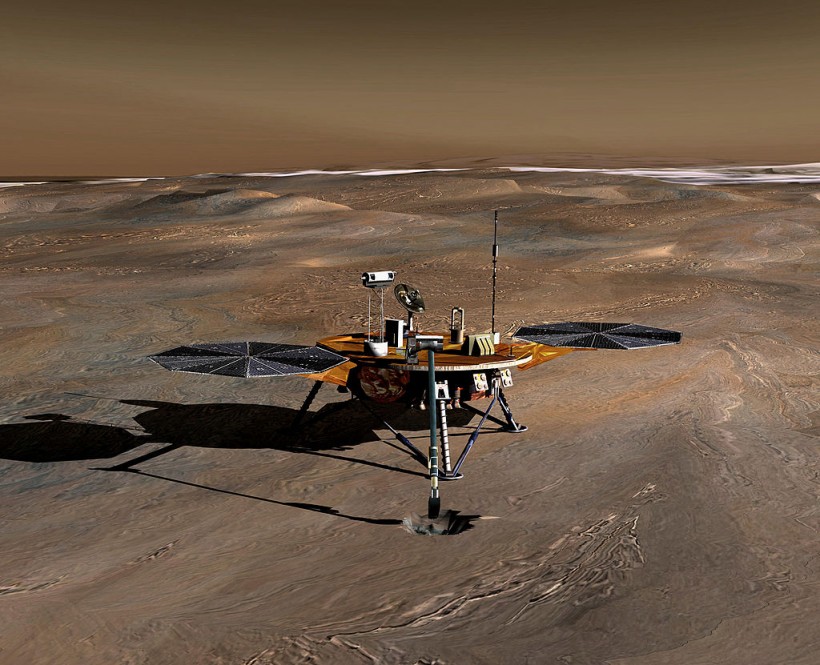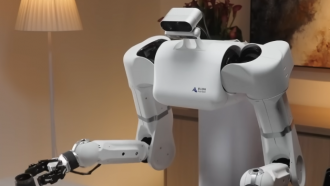Despite the thin atmosphere on Mars, a recent study discovered that the winds there are powerful enough to produce energy that can support future astronaut missions on the Red Planet, as per Space.com's report.
Mars' atmosphere is incredibly thin and has only approximately 1% the density of Earth's. Its winds are only about 1% as strong as those on our planet.
However, researchers have concentrated on developing wind turbines that can function in harsh environments and generate electricity even from light winds.

IN SPACE - MAY 25: In this handout illustration provided by NASA/JPL, an artist's conception of the Phoenix Mars Lander on the Red Planet. Phoenix is slated to land on Mars on May 25, 2008. Launched in the summer of 2007 the lander will join the twin Mars rovers, Spirit and Opportunity and will study whether permafrost could have supported primitive life on the planet.
Wind Turbines on Mars
In a recent study, Victoria Hartwick, a research scientist at NASA Ames Research Center, and her colleagues highlighted that these characteristics might be valuable in creating wind turbines that are practical for use on Mars.
Hartwick and her colleagues were interested in seeing what would happen if they used comparable techniques to global simulations of the Martian environment after wind resource analyst Clara St. Martin explained cutting-edge modeling techniques used to identify ideal locations for wind turbines on Earth.
Hartwick's team calculated the potential energy output of four different wind turbines on Mars. These comprised industrial-sized machines with rotor diameters of up to 100 feet (33 meters) for the 300-kilowatt Enercon E3 and 15 feet (4.5 meters) for the 5-kilowatt Aeolos V.
The study's discovery that Martian wind power increased at night suggested that it could supplement solar power.
A considerable amount of wind power was also produced during dust storms and in the polar and intermediate latitudes during the winter, even if solar production was its lowest.
According to Hartwick, they identified 13 large areas with reliable wind resources.
Read also: NASA's Mars Perseverance Rover Deposits First Sample on the Red Planet's Surface
Potential Landing Sites
The researchers also found that 40 of the 50 potential landing sites on Mars had wind speeds that might provide at least some practical electricity.
For more than 35% of the year, wind speeds at three locations may produce 24 kilowatts, which is sufficient to power a six-crew team, as per Space.com's report.
At seven other locations, wind energy may provide more than 50% of the total electricity required, whether it is in the winter or during dry periods.
If wind energy is just required for scientific equipment, another 30 sites might benefit from it, according to the research team.
Overall, deploying wind power across a large portion of the Martian surface in conjunction with solar arrays might boost the time that power is expected to surpass mission requirements from about 40% for solar arrays to over 60 to 90%.
The researchers recommend more studies to look into wind turbines that might function well on Mars and get more energy from the winds there.
The study was published in the journal Nature Astronomy.
Related Article: NASA's InSight Mars Lander May Have Just Captured its Last Picture After Going Silent






